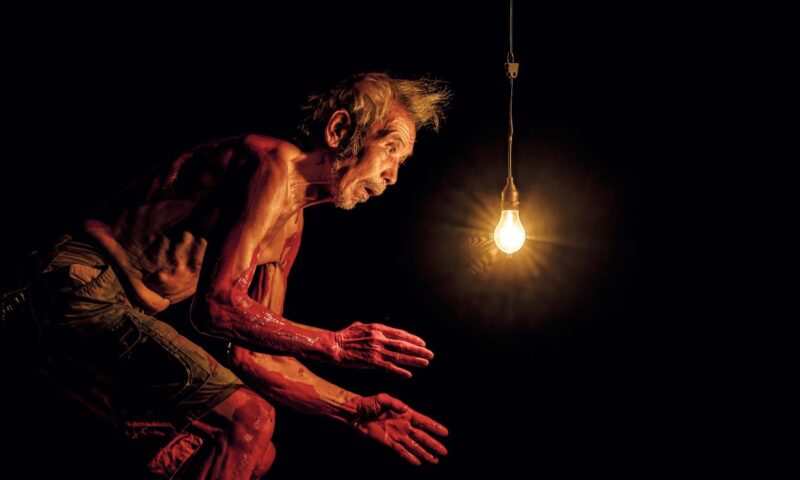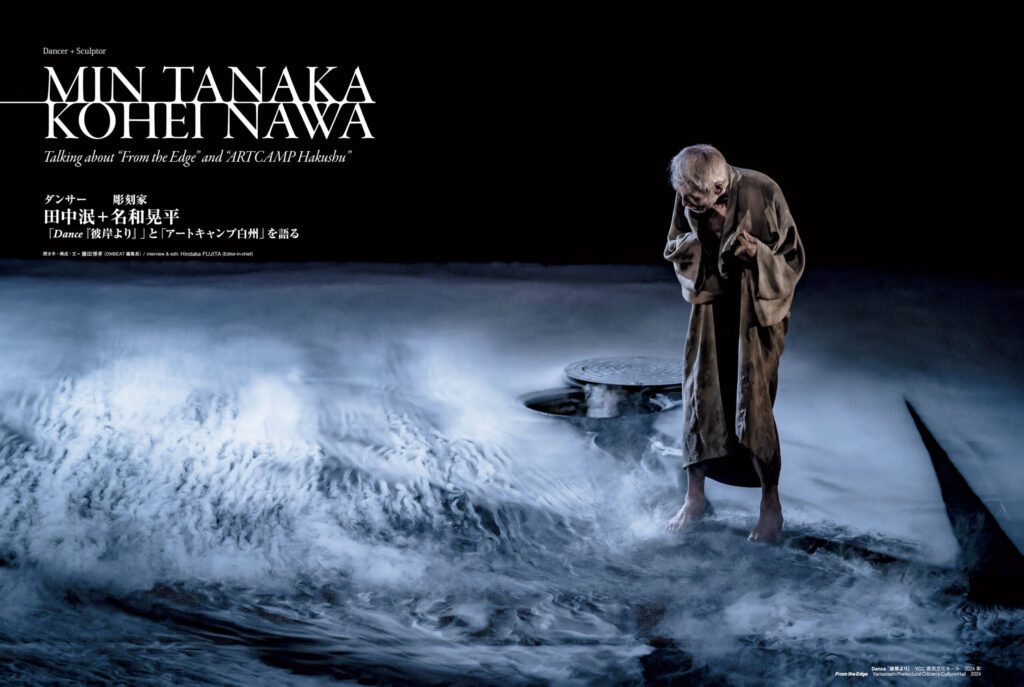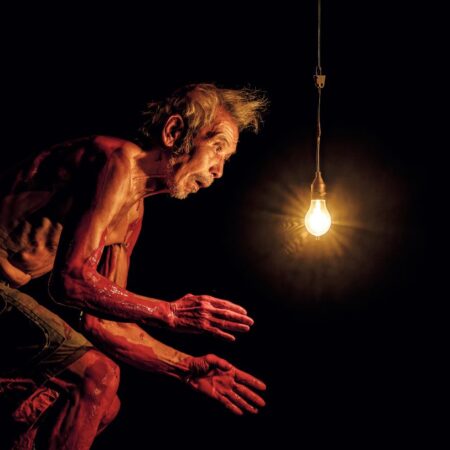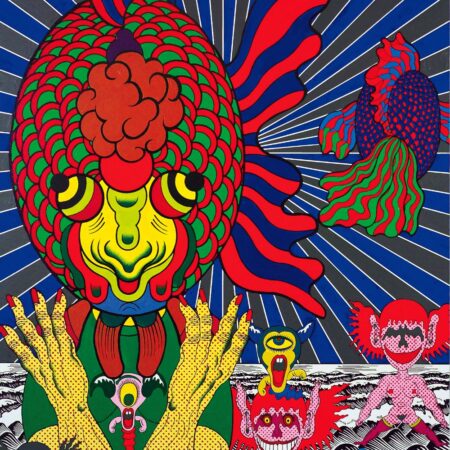Min TANAKA + Kohei NAWA
Talking about “From the Edge” and “ARTCAMP Hakushu”
Interview & edit: Hirotaka FUJITA (Editor-in-chief)
*This article is included in “ONBEAT vol.20” which publish 19th April, 2024
Min Tanaka is a dancer experimenting with the relationship between the body and the world through unconventional activities since the 1970s. Launching an outdoor art festival called “ARTCAMP Hakushu” was one of them. Held in a highland village called Hakushu-cho (now Hokuto City) in Yamanashi Prefecture, where he was based, it served as a place for transdisciplinary creative practices. Today, it is considered an important topic in the history of postwar Japanese art as the pioneer of flourishing regional art festivals. Kohei Nawa participated in the festival as a volunteer in 1994 when he was a freshman at Kyoto University of the Arts. He then returned there frequently and now acknowledges that it has profoundly influenced him. Through this relationship, he served as the guest curator for the exhibition “The trace of Hakushu—What’s Art Camp Hakushu?” held at the ICHIHARA LAKESIDE MUSEUM in 2022. In early 2024, they collaborated for the first time on a theater piece, From the Edge, presented at Yamanashi Prefectural Citizen’s Culture Hall, which was very well received. This summer, the exhibition “ARTCAMP Hakushu 2024” will be presented in Yamanashi as another joint project. Here the two, who have known each other for a long time, had a great conversation on dance, creation, their collaboration on From the Edge, and more.

《From the Edge》Yamanashi Prefectural Citizen’s Culture Hall 2024
Interview with Min Tanaka + Kohei Nawa
Fujita: What was it like for you both to create From the Edge, your first collaborative work, after knowing each other for 30 years?
Nawa: It was really the piece that only Min could pull off. Collaborating with him, the fact that it turned out as a theater piece, and the result of this work are still deeply affecting me and also the staff of Sandwich. I feel that what I had always been dreaming of has come into shape in a way beyond my imagination.
Tanaka: I wanted to encounter something that I had not done before with this piece with Nawa. So, I decided to perform this piece without restricting myself with any imaginable obstacles, such as my physical condition, strength and concentration issues, etc. and prepared myself by following a restrictive diet. My body must have changed a lot by the time we met at the beginning of the new year, compared to when I had met him at the end of the previous year.
Fujita: I saw the performance on the first day. After the curtain closed there was a pause which broke into applause. I think the audience was lost in awe, having just been transported back from another world to the real world. The performance was a dense immersive experience. Even though it was highly abstract without any dialogue at all, everyone was discussing how great it was after the performance.
Nawa: There was a good tense feeling among both the production members and the audience, as they wondered what would come out. I think everyone there witnessed the “birth of something.” Because the reverberation from the performance was so strong, people could not react immediately. I am sure that this afterglow will stay with us for a long time.
Tanaka: It was really quiet during the performance as if the stage and the audience were breathing together. The audience was probably concentrating intensely on their senses. I think that was why they needed some time to quietly return from higan, the other world, to their own.
Fujita: How did the idea and concept for From the Edge come about?
Nawa: First of all, in my solo exhibition at SCAI THE BATHHOUSE in 2021, I had the opportunity to have Min dance in the video installation Tornscape. He danced Baodori (lit. place dance, also translated as Locus Focus) twice without any notice, which was very special for me. Afterward, we agreed to work together again on some kind of a performance project and then several years later, he approached me and asked if I was interested in working on a theater piece in Yamanashi. We began discussing it, and I told him that I wanted to consider Tornscape, the impetus for this collaboration, as our base. I adapted the term Tornscape from the English title of an essay Hojoki: Visions of a Torn World, written more than 800 years ago by Kamo no Chōmei. He detachedly wrote about the recurring natural and man-made disasters and the various changes in the world caused by the desasters. I thought it was possible to look at the present age from Hojoki‘s point of view. In other words, Tornscape is a bird’s-eye view that connects the past and present and is the foundational idea of the concept for this project. This is where we started to expand our imagination.
Tanaka: The feelings I had when I first danced in front of Tornscape‘s video remained in my body. As Nawa said, we first decided on the title From the Edge based on the perspective of the artwork. I imagined what people in the past or in higan, the other shore or nirvana, would say if they spoke to us. Then he and I conversed about creating a stage apparatus that would allow us to travel between such spacetime and here and now, which in other words, a stage that would by itself question the present world from “the other shore.” I believe this also means to pose a question to the world about the world itself.
Fujita: Now, let me talk about the artwork on the stage. Looking from the audience seats, there was a tall tree-like object on the left side, and on the top of it was Nawa’s vulture sculpture PixCell-Vulture as if it was looking down from heaven to earth. On the right side, there was a single manhole that seemed to lead to an underground world. The stage was constantly filled with fog creating an ever-changing landscape that could be seen as a sea of clouds, dunes, or snowfields at different times. Nawa, please tell us about your intentions in creating this simple yet profound stage design.





